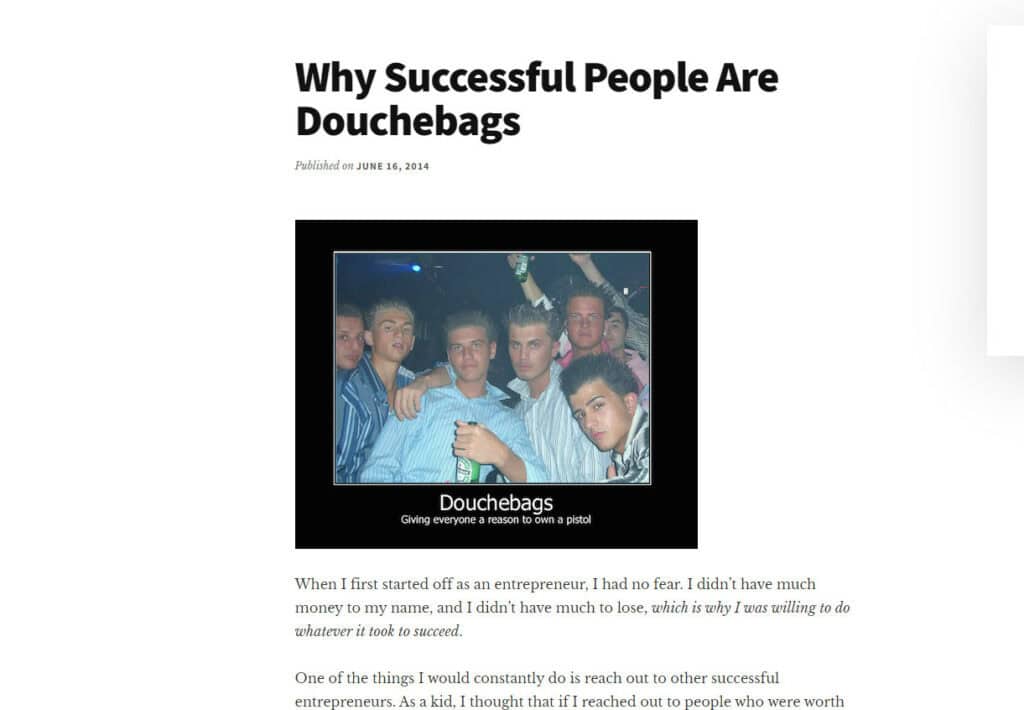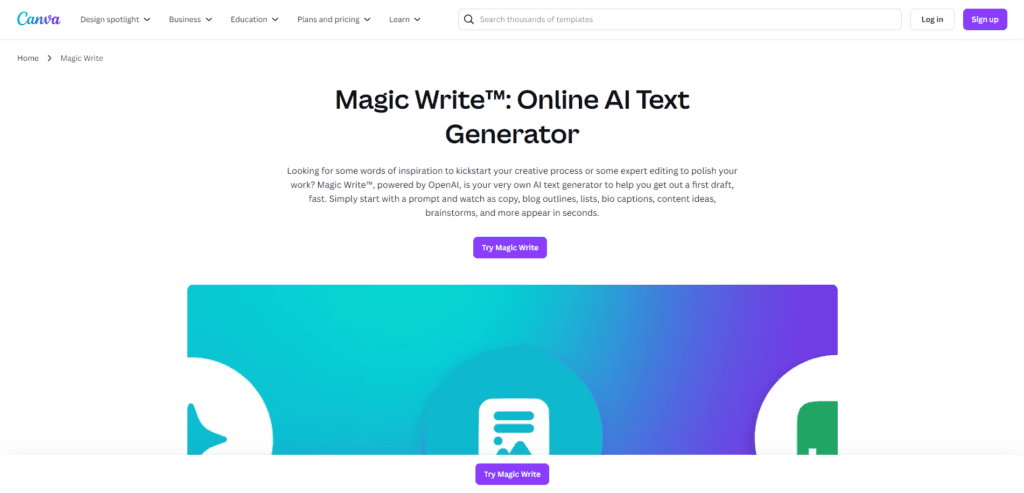
Last Updated on 1 year ago by Christopher Jan Benitez
Learning how to write blog titles is an art.
Bloggers worldwide are vying for the short attention spans of their target audience.
As a publisher, your priority is to grab the reader’s attention y getting them to at least land on your site pages to read your content.
To achieve this, you need to learn how to write effective blog post titles, particularly click-worthy ones.
Why “click-worthy” blog post titles?
Why not the “best” or “the most awesome” headlines?
This is a great question.
To be honest, in the online world, having the most click-worthy headline is the best headline.
Clicks serve as your currency in blogging. The more clicks you get, the more chances you can convert visitors into customers, if not loyal readers.
This is particularly the case regarding search engines and social media shares.
Both are neck and neck as the top channels for referral traffic online.
As you compete for eyeballs, you need to make the most out of what is shown on search engines and social media with your headline. Coming up with the most compelling headline will get them to click on your page.
Just a quick note: what you will not learn in this post are Viralnova and Upworthy types of headline that excite readers’ curiosity to get a click and end up under-delivering on the content side. While this is an efficient business model for all intents and purposes, there are two reasons why you shouldn’t approach writing headlines this way.
- Your blog is not dependent on ads for income – What you, as a blogger and freelance writer, should be aiming for is a headline that delivers the promise in the content.
- You are producing evergreen, sustainable content – Click-bait headlines work best on trending topics. Informative content does not have to resort to tabloid- and gossip-like headlines to receive clicks.
Besides, there are excellent guides that discuss headline strategies using the click-bait approach, such as this post at Buffer.
Types of click-worthy headlines

There are many types of click-worthy headlines that you can utilize for your blog. However, I will distill all the types into five simple yet effective strategies you can apply to your posts.
1. Enumerate them!
There is a good reason why Listverse and, to a lesser extent, Buzzfeed use list posts as a headline strategy.
What makes list posts effective is how they set reader expectations.
For example, in the post “10 Games That Will Make You Nostalgic For The ’90s,” you are only familiar with six video games that make you yearn for the good old days. The post then serves to fill you in on the other four you are unaware of.
(On a side note, I am not sure why Super Mario 3 is not included in the list. Blasphemy!)
Now, suppose we take away the “10” from the title:
“Games That Will Make You Nostalgic For The ’90s”
…would the headline compel you to click on it? For all you know, the post only features the six games you already know. Thus, you will be just wasting your time clicking on the article.
Another example: the post “12 Best Social Media Monitoring Tools Compared (2022)” I wrote is meant for businesses looking for tools to help them monitor their brand mentions on social media.
More importantly, I compare these tools and give my opinion on what I feel are the best tools to help you accomplish this goal.
From the examples above, great blog titles must deliver scalable information to readers. By introducing a set number of tips or advice in the headline of your content, readers will have all the details they need to decide whether to click on the post or not.
Additional tips for writing list headlines:
- Make the list as big as possible – The bigger the list, the better! Aim for lists bigger and better than your competitors. If they are publishing lists in the 20+, make yours at least 30+.
- Settle for odd numbers in your list – A study suggests that odd-numbered lists outperform even-numbered ones. While this is not a rule of thumb, you should check if this applies to your blog.
2. “What’s in it for me?”
Readers are asking themselves this when browsing through headlines from search results and social media feeds.
A simple formula to follow when writing a headline to answer their concern is this:
Tip + benefit.
I used this to create a nice title for my GetResponse post.
7 Authority Hacking Tools To Quickly Grow Your Online Influence
Whereas:
Tip = 7 Authority Hacking Tools
Benefit = Quickly Grow Your Online Influence
When my target readers see the headline, the benefit of boosting their influence online should attract them to click on the link and learn more about the tools.
Therefore, when coming up with an effective headline, you need to put yourself in your readers’ shoes.
In fact, think of your readers like they are hostile, grumpy old men.

“Why should I care to read on click on your post?”
“What exactly will I get from reading it??”
“Who the hell are you???”
I am exaggerating at this point, but you need to understand the importance of stating the benefit of reading your post to your audience.
You want to write catchy blog titles that will encourage curmudgeons to give your article a chance by clicking on it.
Additional tips for writing benefits in your headline:
- Narrow down your target audience for your post – You need to zero in on the type of readers you want to attract. The GetResponse Blog covers topics from marketing, productivity, and automation. For my post on their blog, I focused on online marketers.
- Provide solutions to a specific problem – As a marketer, I know how difficult it is to rise above other equally talented marketers. Therefore, the post was meant to help marketers increase their influence through the tools I featured. Always know the different problems your readers may be going through to make a click-worthy headline that addresses their needs.
3. Use POWER words

I won’t indulge in this section of the post because there is an excellent resource that features a comprehensive list of power words that you can use to boost your headlines.
If you have not read “Turbo-Charge Your Marketing With These 355+ Power Words” by Sumo, then it is high time you should.
The post contains different words you want to use to invoke a certain response from readers. Knowing these words will help you frame your headline a certain way for maximum effect.
Also, a list of 355+ power words is hard to top. But, again, this goes back to how much more effective your list post is if you have many items to feature in your content.
Additional tips on how to use power words:
Use these emotional words wisely. If you are tackling a complicated topic for your post, you would want to use powerful words that denote “simplicity” (stupid-simple, cheat-sheet, tweaks, and more) to encourage more click-through. The choice of power words on your blog post title depends on the topic, so use your best judgment.
4. Mention exact figures
Usually found in case studies, posts with exact numbers and statistics in their headlines should attract your readers to want to achieve the same results.
Let us take a look at Brian Dean’s post “Viral Marketing Case Study: How a Brand New Blog Generated 17,584 Visitors In One Day.”
Let me start by saying that 17,584 visitors in a day is an incredible number.
It is a figure that most bloggers would dream of having in a month.
Hell, I don’t think I ever had that many visitors.
This is exactly why the figure is effective as part of the headline.
It makes me want to know how he did it.
So I click on the link to find out.
Simple, right?
Now that I have clicked on the article, I should expect that there is a step-by-step guide on how he did it.
True enough, there is.
The post runs through the entire process of how he achieved that number of website visitors, complete with screenshots of data and analytics.

It is the kind of post that bloggers and site owners will read repeatedly so they can replicate the process on their own. Some will even share the post, link to it on the blog, and mention it in their newsletters.
This would not have been possible without “17,584 visitors” in the headline.
Additional tips on how to use data and statistics in your headline:
- Deliver on your promise – When mentioning figures in your headlines, you can either share the process of how you came up with them or link to the post that says the figures. Make sure to touch upon the statistics in your blog post so readers will not be left hanging.
- More extensive stats draw a better emotional response – Just like the example above, your headline should feature a huge number that will leave your readers breathless and encourage them to click on the post.
5. Be controversial
Controversial headlines are, well, controversial in and of themselves.
A perfect example of this is when Neil Patel used the word “douchebag” in his headline and got some flack for it.

It did get him a positive response from others, but you may not afford to lose readers or subscribers because of a controversial headline.
However, when done correctly, controversy can skyrocket your traffic and ignite discussion.
Returning to Brian Dean, who is known for developing The Skyscraper Technique, the same technique he used for the viral marketing case study featured above.
It is a beloved technique because it works, plain and simple.
Except for some cases.
Ross Hudgens of Siege Media wrote “When the Skyscraper Technique Comes Up Short,” which details why the Skyscraper Technique doesn’t work.
In a nutshell, the piece argues that the technique is ineffective because it’s a be-all-end-all approach to SEO. Not all websites need to produce Skyscraper content just for the sake of creating one.
Even so, there are many things people get wrong throughout the process, i.e., content doesn’t match with keyword intent, bigger doesn’t always mean better, etc.
However, the post ends by saying that the Skyscraper Technique remains an effective tactic when used correctly. So, the post doesn’t come off as controversial when all’s said and done.
If anything, the controversial piece ushers intelligent discussion among marketers on how to use to technique to great effect.
By using a controversial angle for your headline to get clicks, make sure that you have covered all your bases and use this opportunity to open up the ground for discussion.
Additional tips on how to use controversy in your headline:
- How much risk are you taking? No matter how careful you may be with your controversial headline, there is a risk that some of your readers would react negatively. Make sure you are prepared for the worst and know how to manage it properly.
- Be respectful – From the post to the comment section, always conduct yourself professionally. If you are willing to write a controversial headline and post, make sure you can roll with the punches.
6. Brainstorm with Tools
In today’s digital age, coming up with catchy blog titles doesn’t have to be a hair-pulling experience. AI-powered tools can significantly streamline your brainstorming process, helping you generate creative and click-worthy headlines in seconds. One such powerful tool is Canva’s Magic Write™.
Leveraging Canva’s Magic Write™ for Blog Titles

Magic Write™, powered by OpenAI, is an AI text generator integrated into Canva’s platform. It’s designed to help you quickly draft various types of content, including blog titles. Here’s how you can use it to your advantage:
- Quick Idea Generation: Input a brief description of your blog post topic, and Magic Write™ will generate multiple title options. This can kickstart your creative process and provide ideas you might not have considered.
- Customizable Output: While Magic Write™ generates titles based on your prompt, you can still refine and personalize the results. This ensures that the final title aligns with your brand voice and style.
- Time-Saving: Instead of spending hours brainstorming, you can generate dozens of title ideas in minutes. This leaves you more time to focus on writing your actual content.
- Keyword Integration: When using Magic Write™, include your target keywords in your prompt. This will help generate titles that are not only catchy but also SEO-friendly.
- Diverse Styles: Magic Write™ can generate titles in various styles – from listicles to how-to guides, questions, and more. This variety can help you experiment with different title formats for your blog.
- Overcome Writer’s Block: When you’re stuck, Magic Write™ can inspire you to move forward with your content creation.
How to Use Magic Write™ for Blog Titles
- Open Canva and start a new design or document.
- Click the Canva Assistant button or “/” to open the shortcut.
- Enter a prompt describing your blog post, such as “5 tips for effective time management for entrepreneurs.”
- Hit Enter and watch as Magic Write™ generates title suggestions.
- Review the generated titles, select the ones you like, and refine them to fit your content perfectly.
While AI tools like Magic Write™ are beneficial, they should be used as a starting point. Continually review and edit the generated titles to ensure they accurately represent your content and align with your brand voice. Combine the power of AI with your creativity and knowledge of your audience for the best results.
More tips to help you write good blog titles
- Write multiple blog titles – Don’t be satisfied with writing just one article title for your post, no matter how good it may be. Instead, you need title brainstorming using different headline-generating tools to develop the best blog titles possible. From here, choose one that suits your piece the most.
- Include your target keyword – Writing catchy blog titles is a balancing act of getting people to click on them and optimizing them to rank on Google so you can receive even more clicks. Regarding the latter, you must first conduct keyword research and find the best search query to include in the blog title. Then ensure that the keyword included doesn’t detract you from writing a good headline for your post.
- Test which among the catchy headlines works the best – If you can’t decide on a title from the blog headlines you’ve brainstormed, it’s best to run an A/B test on them. Use a plugin like Nelio A/B Testing to run tests and measure the results once they conclude. You should then see which title generated the most clicks from users. Use the winning variant for your blog moving forward, or pit it against another title.
Do you now know how to make a good blog title?
Writing blog titles that drive clicks is a skill you need to develop over time. This post has provided ample information on why and how you should write your headlines.
You must apply the strategies shared here to drive more click-throughs to your site from search results and social media.
